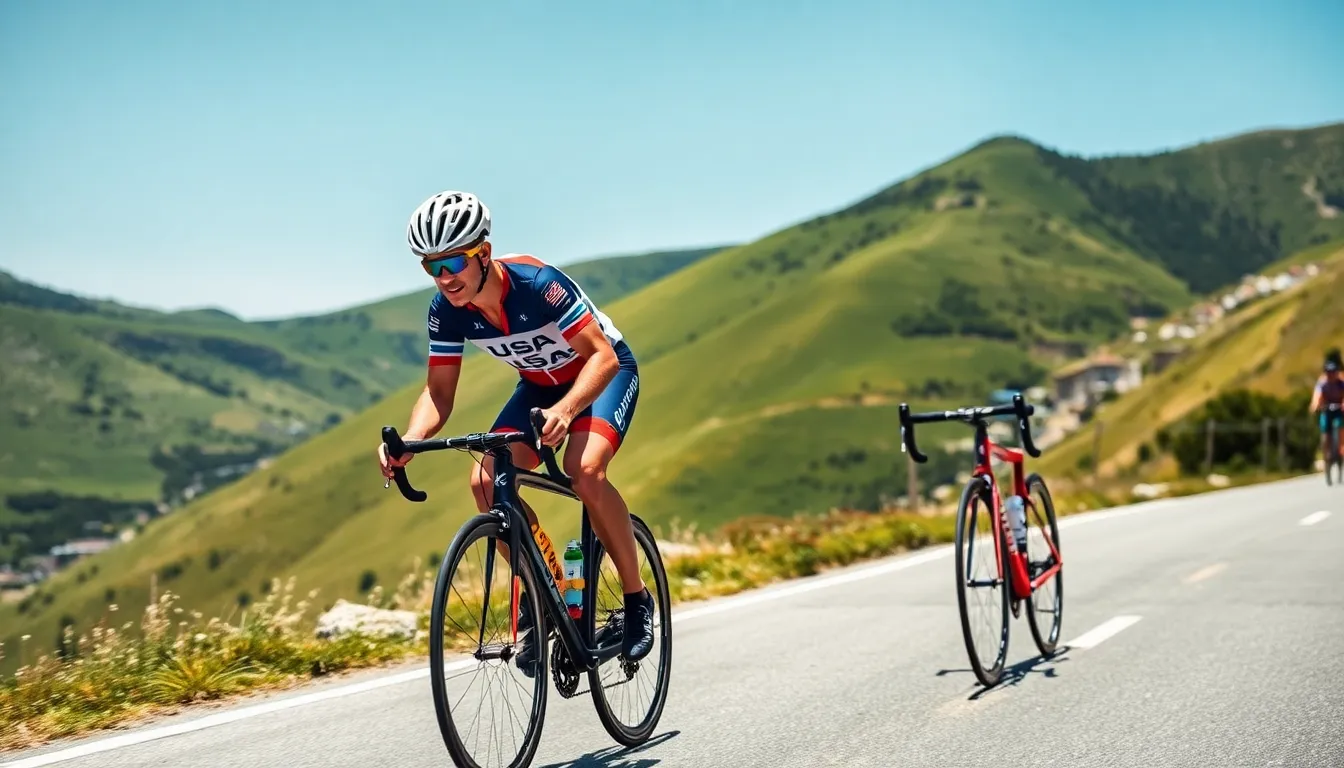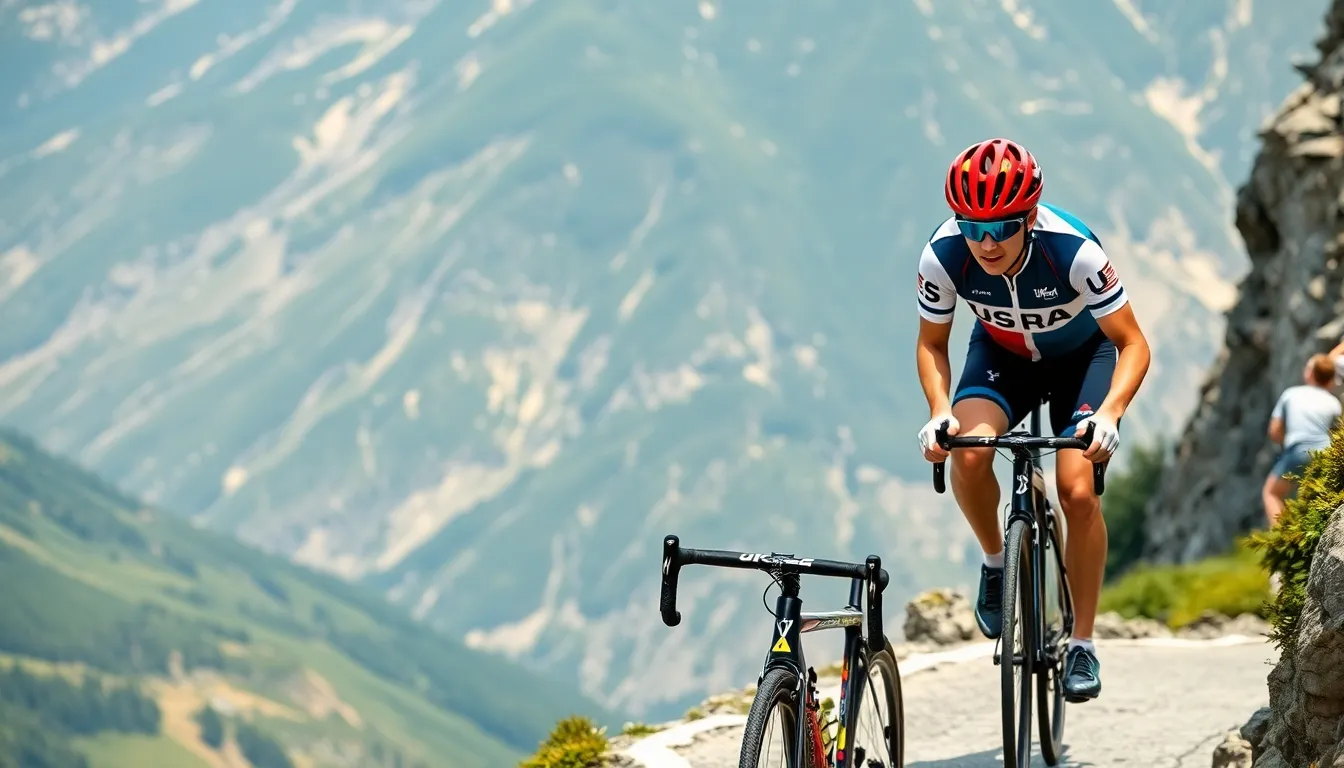The Tour de France isn’t just a bike race; it’s a grueling test of endurance, strategy, and perhaps a little bit of madness. With cyclists zipping through picturesque French landscapes, one can’t help but wonder: how many stages does this epic journey actually have? Spoiler alert: it’s more than just a leisurely Sunday ride to the bakery!
Table of Contents
ToggleOverview of Tour De France
The Tour de France consists of a series of stages that highlight diverse terrains and challenges. Each year, the event typically features 21 stages spread across 23 days. Runners tackle flat, hilly, and mountainous segments to test their skills and endurance.
Stages often include individual time trials, where competitors race against the clock, emphasizing speed and technique. The event also showcases team time trials, where cyclists work together to achieve the best cumulative time.
A majority of stages occur in France, although occasional excursions into neighboring countries expand the event’s reach. Each stage contributes points toward the overall classification, impacting teams and individual riders alike. Noteworthy, the highest climbing stage this year covers the famous Alpe d’Huez, a favorite for both spectators and cyclists.
Spectators enjoy multiple strategies throughout the race, as teams employ tactics based on stage profiles and rider strengths. Falls and mechanical issues add elements of unpredictability, affecting team performance and outcomes.
Amidst varying weather conditions and geographical challenges, every cyclist faces unique obstacles that ultimately decide the victor. The cumulative distance often exceeds 2,200 miles, demanding exceptional physical and mental strength from participants. Each aspect of the Tour de France reveals the intricate interplay of endurance, strategy, and competitive spirit that defines this world-renowned race.
Number of Stages


The Tour de France comprises 21 stages over 23 days. Each stage presents its unique challenges, from individual time trials to team actions.
Breakdown of Stages
Stages include flat, hilly, and mountainous terrains. Flat stages typically favor sprinters, offering a chance for fast finishes. Hilly stages often challenge climbers, requiring endurance and strategic pacing. Mountain stages demand high levels of stamina as riders tackle steep ascents. Time trials require precision and speed, with cyclists competing against the clock. Individual and team time trials contribute significantly to overall standings. The structure of 21 stages ensures a comprehensive test of both skill and physical strength.
Variety of Stages
The variety of stages contributes to the race’s complexity. Flat stages encourage speed while mountainous regions test climbers’ resilience. Hilly courses often create opportunities for breakaways, adding excitement to the competition. Time trials highlight athletes’ technical skills and coordination. Unique interactions unfold between rider tactics based on stage profiles. Different weather conditions further enhance the unpredictability of each segment. With stages spanning diverse landscapes, cyclists face constant challenges that contribute to their overall performance in this iconic event.
Historical Changes in Stages
Stages in the Tour de France have evolved since the race’s inception in 1903. Initially, the event featured six stages that covered about 1,500 kilometers, geared towards fostering interest in cycling. Over time, the number of stages increased, gradually reaching 21 stages today, stretched across 23 days. This change reflects a growing ambition to challenge riders with diverse terrains and increasing distances.
Mountain stages emerged prominently in the 1910 edition, introducing high-altitude climbs that added complexity and excitement. Competitive strategies shifted with the introduction of time trials in 1934, emphasizing individual performance instead of solely relying on team support. The 1960s saw the introduction of the infamous Alpe d’Huez, a stage that stands out for its grueling inclines and dramatic landscapes.
Different eras influenced stage structures based on popular cycling tactics. The introduction of sprint stages became significant as competitive dynamics favored sprinters, while recent decades have seen a rise in stages dedicated to climbers, showcasing the varied strengths of cyclists. Changes in the race format included the introduction of team time trials, allowing teams to work cooperatively in crucial stages.
Technological advancements and improved bike design impacted performance throughout the race’s history. Riders adapted to newer strategies, utilizing equipment to enhance speed and endurance. Historical transformations demonstrate how the Tour de France not only tests physical limits but also evolves with the sport, maintaining relevance in competitive cycling. Each modification to stage structure contributes to the epic narrative of the race, weaving in history, strategy, and resilience.
Analysis of Stage Structure
The structure of the Tour de France stages significantly influences both riders and teams. Stages vary in difficulty, length, and terrain, adding complexity to race strategies.
Impact on Riders
Riders face unique challenges in each stage based on terrain types. Sprinters excel in flat stages, quickly covering distances. Climbers encounter steep ascents in mountainous stages, demanding exceptional stamina. Endurance plays a crucial role, especially in lengthy rides with varying conditions. Time trials test riders’ individual speed and technical skills, often affecting overall rankings. Mental resilience becomes essential throughout the race, as competitors navigate fatigue and tactical decisions day after day. Success relies not just on physical ability, but also on strategic planning, teamwork, and adaptability to daily stage variations.
Significance for Teams
Team dynamics are vital during the Tour de France, where stages impact collective strategies. Each team must optimize their members’ strengths to excel in different stages. Collaboration fosters smoother transitions during challenging segments, especially in mountainous areas. Strength in numbers enhances performance during sprints and climbs. Efficient communication among teammates leads to better positioning and energy conservation. Overall team placement in the race relies on each member’s performance across all stages. Competitive advantages manifest through support strategies, such as lead-outs during sprints and protecting team leaders in mountainous terrains.






